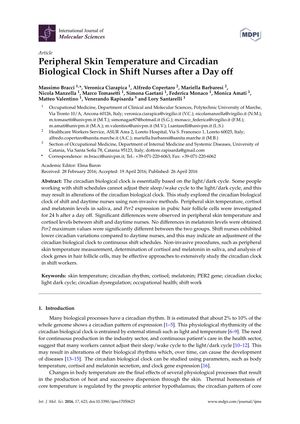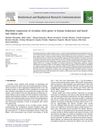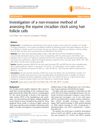Peripheral Skin Temperature and Circadian Biological Clock in Shift Nurses After a Day Off
April 2016
in “
International journal of molecular sciences
”

TLDR Shift nurses show altered body temperature and stress hormone levels, suggesting their body clocks adjust to irregular schedules.
The study investigated the circadian biological clock of shift nurses compared to daytime nurses by examining peripheral skin temperature, cortisol and melatonin levels in saliva, and Per2 gene expression in pubic hair follicle cells after a day off. It found that shift nurses had significant differences in peripheral skin temperature and cortisol levels, but not in melatonin levels, when compared to daytime nurses. Additionally, the maximum values of Per2 expression were significantly different between the two groups. The results suggested that shift nurses had lower circadian variations, indicating a potential adjustment of their circadian biological clock to their continuous shift schedules. The study highlighted the effectiveness of non-invasive methods such as measuring peripheral skin temperature, determining cortisol and melatonin in saliva, and analyzing clock genes in hair follicle cells for studying the circadian clock in shift workers.


